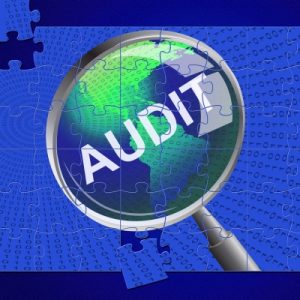In ourfirst post, we talked about the potential dangers of a regulatory audit and how to reduce the risk. As a followup to that post, we want to answer the following question: In today’s world with massive amounts of regulations that often overlap, how do you maintain compliance?
Navigating the sea of compliance can be challenging for a lot of companies, especially since regulations can change so drastically from region to region. For example, the Inland Empire in California has much stricter particulate matter (PM) regulations than in other areas because the levels are already so high.
These regulatory challenges can be tackled in an efficient and systematic way by taking the appropriate steps to create internal management tools.
The first step is to simply identify what your regulated entities are. A regulated entity is essentially an operation that is being told by the government what they can and cannot do. These operations will need permits or authorizations in order to operate, otherwise they would face massive fines.
 The second step is to identify if local, state, and/or federal regulators govern these entities. For example, the federal EPA’s Spill Prevention, Control, and Countermeasure (SPCC) regulations govern oil tanks over 1320 gallons. The Texas Commission on Environmental Quality (TCEQ) also has regulations governing such tanks at a state level. On top of that, local regulations can apply depending on the region or county.
The second step is to identify if local, state, and/or federal regulators govern these entities. For example, the federal EPA’s Spill Prevention, Control, and Countermeasure (SPCC) regulations govern oil tanks over 1320 gallons. The Texas Commission on Environmental Quality (TCEQ) also has regulations governing such tanks at a state level. On top of that, local regulations can apply depending on the region or county.
As you might imagine it can get really challenging when these regulations overlap, but you’ll need to abide by all of them.
The third step is to identify the exact regulations that have been put in place by these regulators. The three primary areas are air, water, and waste regulations. If your operations pollute the air or water, or create waste, you’ll need a permit or authorization in that area.
The last step is to know what data to record and how often in order to stay compliant. The regulations often will specify how often you need to record data, such as weekly, monthly, quarterly, or annually, for example. Other regulations can limit your hours of operation, such as only being able to operate between the hours of 9am and 5pm.
Once you have gathered all of this information, a management tool should be created to streamline your processes. The best way to do this is by itemizing what your regulated entities are, each area you’re regulated under, and what the pertaining regulations are all in one checklist, then creating systems to meet these regulations.
Having all of this information in one place will go a long way toward maintaining compliance, and we have seen it help our clients greatly. Companies that wing it with their recordkeeping or don’t do it at all will be hit hard when an audit comes around. Trust us when we say that the cost of recordkeeping is nothing compared to the fines that can result from an audit.
As stated in the previous post, the team at RECES Environmental has decades of experience helping our clients maintain compliance by putting these internal regulatory systems in place. We would be happy to provide advice and work with you to abide by all regulations.
Contact Kevin Moin by email at kmoin@reces-llc.com or by phone at (281) 529-5087 to discuss how we can help.
Together we can maintain compliance!
